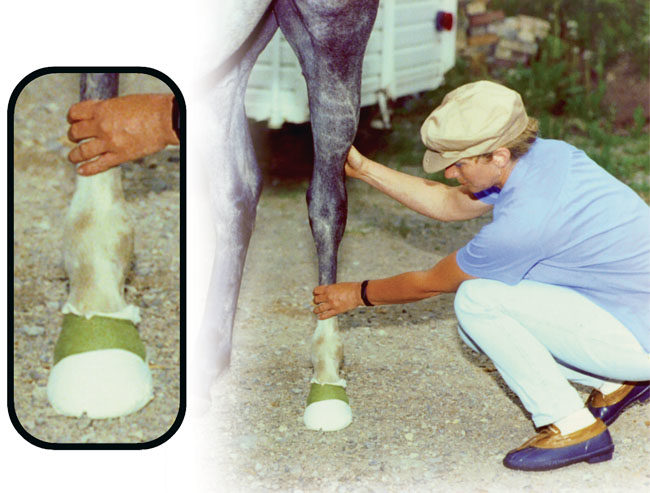American Farriers Journal
American Farriers Journal is the “hands-on” magazine for professional farriers, equine veterinarians and horse care product and service buyers.

APPLYING A POULTICE BANDAGE. A poultice bandage is often used for treating an abscess, the threat of an abscess, gravel, puncture wound and severe bruises. Photos courtesy of Animal Care Products, 3M Health Care Group.
It’s often said that it is better to leave a horse’s legs unbandaged than to bandage them incorrectly. Fortunately, there is nothing complicated about a farrier learning to apply bandages.
The key is to make the bandage smooth and tight. While it is difficult to wrap a bandage over joints due to the curves of the limb, practice and using the right materials will make this task easier. To avoid constricting the limb, it is necessary to apply a cotton roll or quilt under a snug Vetrap, Elastikon or standing wrap. This allows you to apply pressure to the outer layer on a badly bleeding wound or swollen leg.
Even with a horse kept in a stall, the bandage will often become loose in 24 to 36 hours. Changing a bandage every day may be necessary to treat wounds, check suture lines for infection and re-apply pressure to decrease swelling.
Bandaging can provide both protection and support for a horse while working, traveling, resting or recovering from a hoof or leg injury. Here are some key points to keep in mind:

STEP 3. Reverse the Baggie by pulling it right side out, then up and over the hoof.

STEP 2. Place a small plastic bag, such as a Baggie,” inside out over…